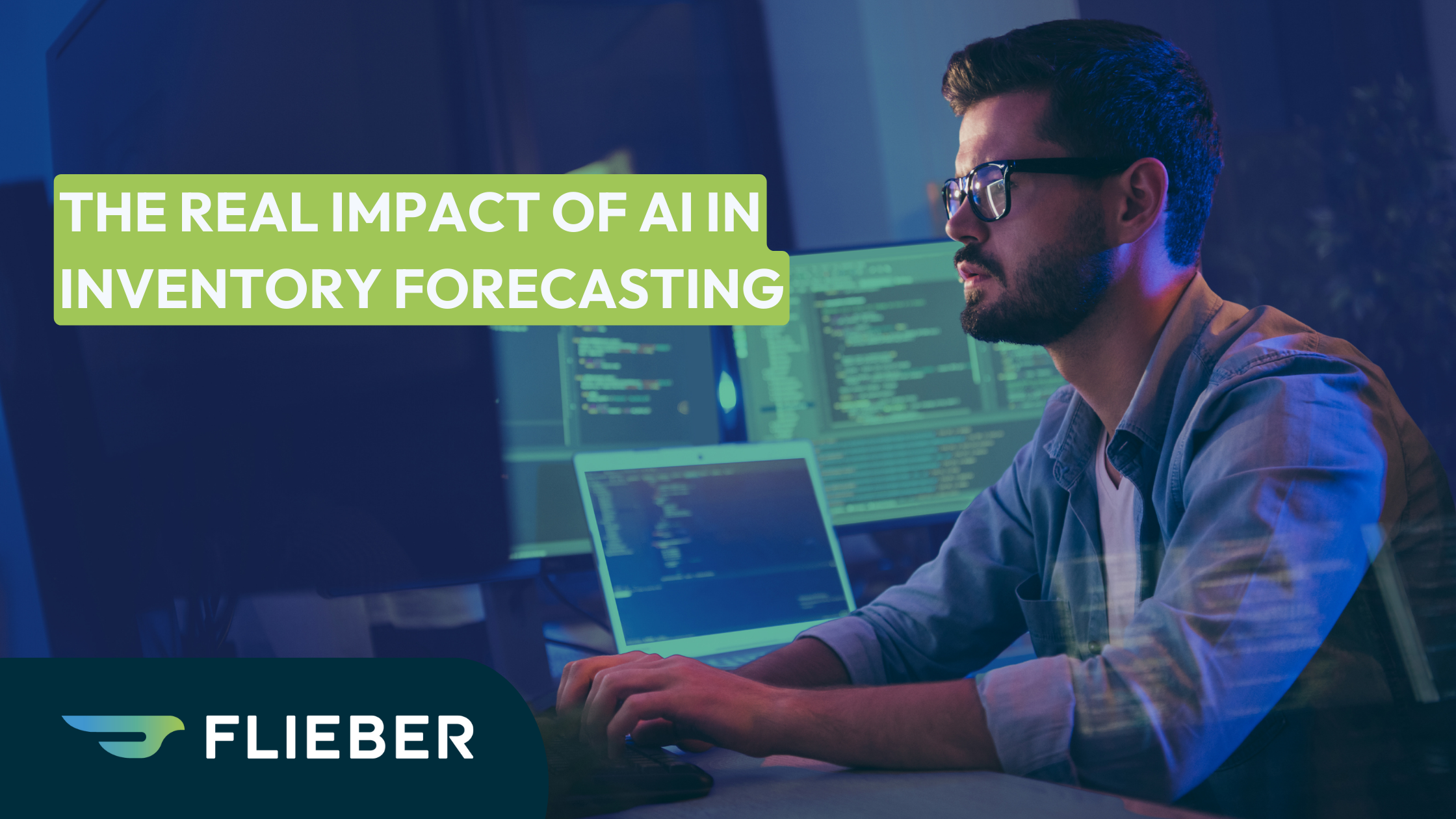From just 4% in 2016, nearly a third of retailers are now using AI. But there’s a lot more to it than customer service bots and product recommendations. For retailers spending multiple hours per week on inventory, AI can help you make better replenishment decisions in less time.
Last week, we explored the top four use cases for AI in inventory. Today we’re taking a closer look at its current and future impact on what is arguably the most critical inventory task: forecasting.
Inventory forecasting today: slow, static, and simplistic
Raise your hand if you spend a massive chunk of your week on inventory-related tasks.
The majority of retailers (67%) agree that analyzing inventory is not an effective use of employee time, especially when the end result is riddled with errors and inaccuracies.
With no scalable way to manage the complexity of your inventory data, the current forecasting process leaves a lot to be desired. Here’s how it typically looks.
Slow and complicated
Pricing, promotions, seasonality. Whether you’re working with steady products, items with intermittent demand, or all of the above — pre-processing your inventory data is a massive (and massively time-consuming) task. Your Excel-based forecasting process might’ve worked fine when you had a few products on one channel, but when you need to plan the replenishment of various SKUs in more than one channel, you could end up spending a lot of time in your spreadsheets and making costly mistakes along the way.
Overly simplistic
Standard approaches like moving averages based on past sales are widely accepted as “good enough”, but they can’t account for the full spectrum of factors influencing your inventory. From extreme weather events to viral campaigns, inventory forecasting isn’t a “set and forget” exercise. There are an endless number of external factors that can easily fly under the radar of static off-the-shelf inventory systems.
Opaque and confusing
Most systems offer automated notifications to let you know when it’s time to replenish, but few give you the visibility you need to make smarter, faster decisions that are grounded in data.
The result is a forecasting process that is painfully lacking in context. You and your team spend hours trying to make sense of massive amounts of data from multiple sales channels and inventory locations, only to end up with too much or not enough inventory.
With AI-powered forecasting, all of that changes. By tapping into the power of machine learning, you can generate stronger forecasts with fewer errors — in a fraction of the time.
Inventory forecasting tomorrow: fast, comprehensive, and automatic
There’s a reason 99% of retailers say they plan to enhance their forecasting capabilities ahead of peak season.
According to McKinsey & Co., using AI-powered forecasts can reduce errors by up to 50%, which also reduces lost sales and product unavailability by up to 65%. Consider how much more revenue you could bring in with 65% more peak season sales.
That’s the power of AI in inventory forecasting. Here’s a closer look.
Fast and efficient
More complexity means better accuracy. And now you can get it without hours of manual data crunching. With AI, retailers can use specific forecasting algorithms for specific products and use cases. Machine learning will combine those algorithms and automatically select the ones that work best for each product.
Accurate and comprehensive
AI takes the problem of complexity and turns it on its head. In the new world of AI-powered inventory planning, retailers will be empowered to gather as much data as possible and feed it directly into their forecasting algorithms. The more data you feed it, the better your forecasting gets. Over time, you can improve your forecast accuracy and consistently increase sales.
Relevant to retail
Most inventory forecasting systems analyze categories, not patterns. But what happens when you have two products in the same category that behave differently? With AI, you don’t have to limit your forecasting to products like yours. AI can give you the benefit of knowing how products with similar patterns have performed. For example, a toy manufacturer and iPad case manufacturer have very different products, but very similar seasonal sales patterns. Whether it’s understanding how fast a new product will sell or fine-tuning your Q4 inventory, AI forecasting algorithms actively learn and improve based on a wider and more relevant retail context.
Dynamic and data-driven
Machine learning algorithms don’t just know when you sold more or less of a product, they also know why you sold more or less. AI analyzes any number of internal and external factors, including lead times, trends in seasonality, and spikes or drops due to flash sales or low-in-stock inventory. From static forecasts based on limited data to live forecasts that connect and process vast quantities of data, AI-powered forecasts don’t just power your replenishment decisions, they can also improve your sales decisions. Want to do a promotion to increase your sales by 20%? Add it to the forecast and see the impact of that scenario in real-time.
Vision-based
If you’ve ever played with an AI image generator like Midjourney or DALL-E, you’ve already dabbled in vision AI. Vision AI is already being actively used by automotive companies in self-driving cars, by chartists in financial and investment banking industries, and more.
In the not-so-distant future, the same object and pattern recognition technology can unlock a new reality of vision-based forecasting for retailers. With the ability to rapidly make sense of image-based patterns, you’ll be able to forecast based on charts as well as data, bypassing time-consuming data analysis and taking you straight to decision making.
Stay a step ahead with AI for inventory forecasts
With AI in inventory forecasting, you can anticipate demand and stay ahead of market trends, without sinking time and resources into manual data processes. You’ll get a live forecast that tells you exactly what to do for different products in different scenarios based on your latest sales and inventory data.
And the time to start is now. Today, 21% of retailers say they’ll implement machine learning algorithms ahead of Q4. Will you be among the early adopters?
Say goodbye to stockouts, surpluses, and surprises. Try the AI algorithm that’s been tested on over 3 million SKUs. Sign up for your free trial of Flieber today.


-1.png)

